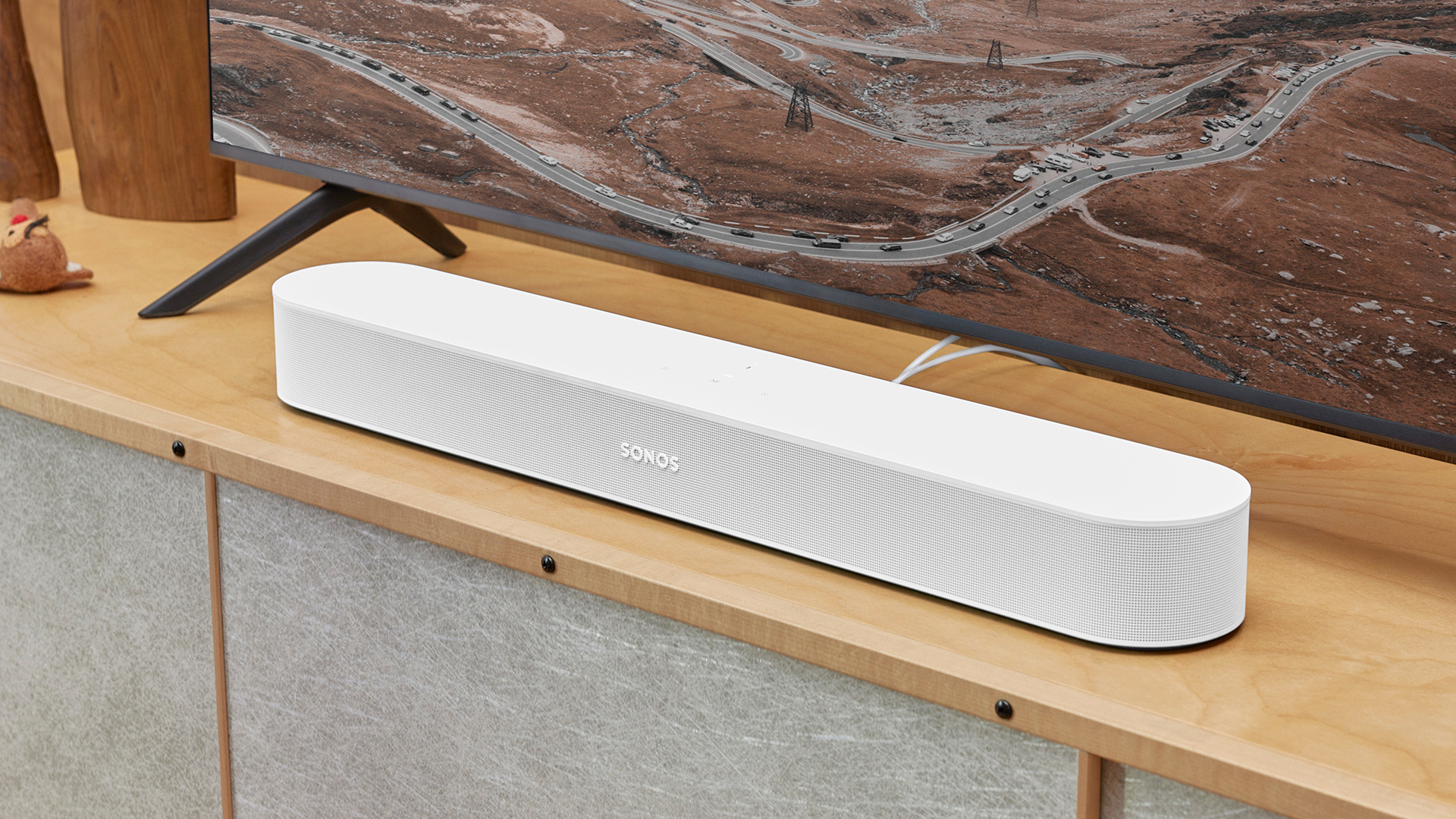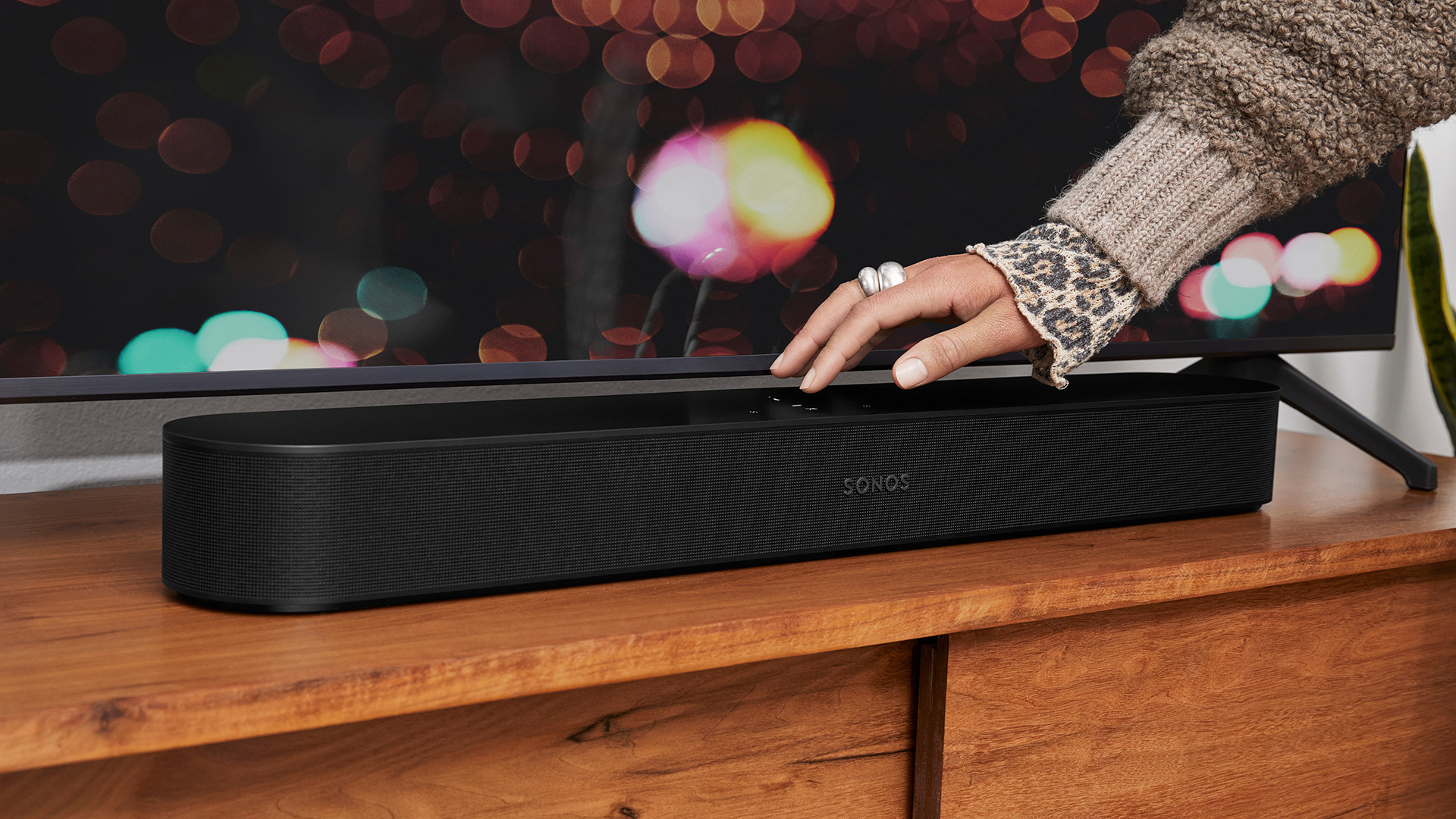
Sonos has just announced the new version of its excellent soundbar, the Sonos Beam, which has been a staple of our list of the best soundbars since it came out. The new Beam will fully replace the old Beam, and looks almost identical, but adds Dolby Atmos support along with more advanced sound processing to create a more 3D feel to its audio.
The new Beam will cost £449/$449/AU$699 – that's a small price increase over the original – and will be available from October 5th, 2021. Just like the original, it's a compact 651x69x100mm (25.6x2.7x3.9 inches), meaning that it can be matched with 32-inch TVs and up, unlike most Dolby Atmos soundbar (which tend to be much, much larger).
For the most part, the new Beam is hard to tell apart from the old one – it's the same dimensions, in the same white and black finishes. But whereas the old one had a fabric cover over the speakers, the new version has a solid grille, which matches the Sonos Arc.
The speaker setup is similar too, with four mid-range drivers providing the majority of the sound output, three bass radiators adding low-end thrills, and a tweeter in the centre on speech duties.
Sonos says that all have been tweaked in this new version, though, and that the centre channel in particular has had a lot of work, to help make dialogue even clearer no matter how busy the soundtrack gets.

There are no upfiring drivers for true Dolby Atmos height, but that's partly down to the design and shape of the soundbar, which Sonos said has been developed specifically to fit certain needs, so Sonos isn't keen to change it.
Instead, Dolby Atmos sound will be decoded in full, and then processing (and the angled side drivers) will make the audio sound spread out. Tech and learnings from the Sonos Arc have been used to develop the new Beam, and given just how good the Arc sounds, we're really looking forward to seeing this can do.
Get all the latest news, reviews, deals and buying guides on gorgeous tech, home and active products from the T3 experts
Like all Sonos soundbars, it's also a multi-room Wi-Fi speaker and a smart speaker. It works fully as part of a Sonos or Apple AirPlay 2 setup, and its microphones work with both Alexa and Google Assistant.
In terms of connections, things are unchanged from the original Beam, except that the sole HDMI port now supports eARC. You've got an adapter in the box for optical connectivity, and there's Ethernet for internet, though it has 802.11ac Wi-Fi included, naturally.
I really hoped that this model would include HDMI passthrough – where you have an HDMI input as well as a HDMI connection to the TV – because lacking one is the only major flaw of the original. If you have a smaller or more budget TV, you probably only have two or three HDMI ports, and losing one to your soundbar can be a big problem – but if your soundbar has an HDMI passthrough, then it's no issue at all.
It's especially relevant now that the Sonos supports Dolby Atmos, because if your TV doesn't (and remember, that includes all Samsung models, as well as cheaper TVs) then you can't take advantage of the best sound the new Beam has to offer. But with an HDMI passthrough, you could plug an Atmos-supporting box into it directly, so you get the full 3D effect from that source.
Support for Sonos' Trueplay feature means that you can customise the sound for your room (though only if you have an iPhone or iPad running the Sonos app), and you can also use the Sonos app to turn turn on a Speech Enhancement mode that makes dialogue even clearer, or a Night Sound mode that limits how loud explosions and things can go, to avoid waking the kids.
There are controls on top too, for volume and music playback control. Just like before, they're touch-buttons rather than real buttons.

Matt is T3's former AV and Smart Home Editor (UK), master of all things audiovisual, overseeing our TV, speakers and headphones coverage. He also covered smart home products and large appliances, as well as our toys and games articles. He's can explain both what Dolby Vision IQ is and why the Lego you're building doesn't fit together the way the instructions say, so is truly invaluable. Matt has worked for tech publications for over 10 years, in print and online, including running T3's print magazine and launching its most recent redesign. He's also contributed to a huge number of tech and gaming titles over the years. Say hello if you see him roaming the halls at CES, IFA or Toy Fair. Matt now works for our sister title TechRadar.
